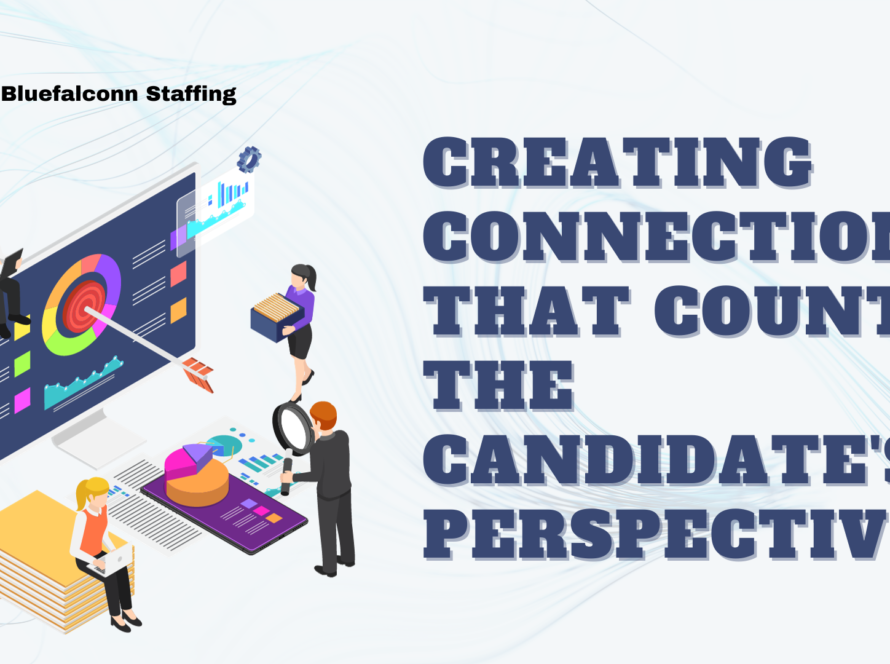The United States labor market is in a state of flux, and it’s no secret that the dynamics of talent supply and demand are constantly evolving. The year 2023 marks a crucial juncture in this ever-changing landscape, with significant shifts anticipated. As we peer into the near future, it becomes increasingly evident that understanding these forecasted trends is vital for both employers and staffing agencies.
AI in recruitment, refers to a technology that can carry out tasks and workflows without human monitoring, thus freeing recruiters to work on relationship building.
But AI can be impersonal. AI struggles with candidate connections. AI chatbots can answer common queries, but recruiters must build genuine candidate relationships. AI can automate non-personal tasks to help recruiters form relationships. Recruiters can return to their passion: building relationships with applicants to fill open positions.
This is why AI will never replace recruiters. Interviewing and choosing the best candidate are always human choices in HR. AI can speed things up.
Fewer Americans are actively looking for employment in all industries, which makes hiring challenging for many staffing companies. Due to a shortage of candidates, experts predict that this trend will continue to exist.
Amid this remarkable demand, talent acquisition leaders are experiencing a decrease in overall applicant volume and an increase in candidates not showing up for their interviews or the first day of work. Let’s dig in further to understand the outlook for talent supply and demand.
The supply and demand of talent in the United States is expected to be particularly intriguing in 2023. It is anticipated that both the economy’s rate of development and expansion will increase. Staffing agencies will be unaffected because this won’t make businesses wary of bringing on new employees or concerned with reducing costs. Temporary and contract workers will get more attention. As a result, things won’t be difficult for staffing firms, and those who can change and adapt will be in a strong position to succeed.
Talent Supply
Older employees are retiring:
Younger generations are unlikely to lack the expertise or training needed to fill the jobs left by the retiring workforce by 2030. With advancements in technology and access to education, they are well-equipped to take on these roles. The challenge may lie in knowledge transfer, but mentorship and training programs can facilitate this. With proper support, the younger generations can successfully fill the roles left behind, ensuring a smooth transition and continued workplace success.
Talent Demand
Employers Brace for More Quits:
The main reason for changing jobs is an increase in pay (71%), but this is not an isolated event. The Great Resignation didn’t just happen because employees are looking for better pay opportunities. The pandemic brought in a complete rethink of work values and the place they occupy in workers’ personal lives.
Vacant Tech Positions Remain Unfilled:
Despite reports of widespread layoffs at tech startups, US employers have so far in 2022 posted a record 1.6 million tech job openings, a 40% rise over the same time in 2019. Nearly 30% of all tech job listings by employers in April were for software developers and engineers.
According to Korn Ferry, by 2030, there may be an 85.2 million-person worldwide talent shortage, costing businesses trillions of dollars in lost opportunities. Here are a few new trends to keep an eye on if you want to remain ahead in the staffing industry.
Companies Will Be Diversifying Talent Sources:
As the labor market becomes more and more competitive, it will be more difficult for companies to hire and keep employees. They’ll need to start searching for talent elsewhere. They will therefore get in touch with talent groups they haven’t yet used. This includes those who are currently unemployed, underemployed, or who live in other parts of the country.
Employer Branding Will Be Critical to Face Talent Disruption:
The globalization of jobs and technology has led to a global talent market that is always open.
Conclusion
The US talent acquisition landscape is always challenging but always rewarding, and one trend that will prevail is significant growth in the recruitment industry in 2023.
Two takeaways: the number of young, skilled employees is increasing significantly, and both in the short and long terms, there will be a greater need for workers than there are open positions.
In 2023, there are great opportunities to enhance your talent acquisition strategies and stay competitive. Diversifying your recruitment sources, using technology, and outsourcing can all improve your process and help you secure the best talent. Embracing these strategies can keep your business ahead of the curve and drive success.



